By Donald McConnell & Gustav Person
The celebrated 2nd U.S. Cavalry, like its brother regiment the 1st U.S. Cavalry, was formally created by an act of Congress in March 1855. Both units were the brainchild of Secretary of War Jefferson Davis, who lobbied long and hard for their creation to safeguard American immigrants on the Western frontier. A remarkable number of future Union and Confederate generals served in the ranks of the two regiments, including such luminaries as Robert E. Lee, Albert Sidney Johnston, Joseph E. Johnston, J.E.B. Stuart, John Bell Hood, Edmund Kirby Smith, Earl Van Dorn, William Hardee, Fitzhugh Lee, George H. Thomas, John Sedgwick, and Charles Field. A stray Indian arrow here or there might well have changed the entire course of the Civil War.
Of the two regiments, the 2nd undoubtedly had the harder task. While the 1st was assigned to the rolling grasslands of Kansas, Nebraska, and eastern Colorado, the 2nd had to cover the more inhospitable region of Kansas, Oklahoma, and northern Texas, home to the most fearsome tribe on the plains, the Comanche. There were more than 15,000 Comanche warriors within its borders, almost four times as many as the dominant tribe, the Cheyenne, had in the 1st Regiment’s area of responsibility.
The 2nd Cavalry: U.S. Frontier Guard
Prior to the Civil War, the 10 companies of the 2nd Cavalry were spread across Texas in small, far-flung garrisons. The companies guarded the frontier, escorted streams of immigrants crossing the plains, and fought unceasingly hostile Comanche. Company H, stationed before the war at Camp Cooper, 275 miles west of San Antonio, was representative of the other companies of the regiment. Camp Cooper was a dreary frontier post named after the adjutant general of the U.S. Army and built on the Clear Fork of the Brazos River on the Comanche Reserve in West Texas. From there, Lt. Col. Robert E. Lee led a 40-day, 1,600-mile punitive expedition against the Comanche in the summer of 1856, but averaged sighting only one Indian every 20 days. Said Kirby Smith, who accompanied Lee on the expedition, “We traveled through the country, broke down our men, killed our horses and returned as ignorant of the whereabouts of Mr. Sanico [a Comanche chief] as when we started.”
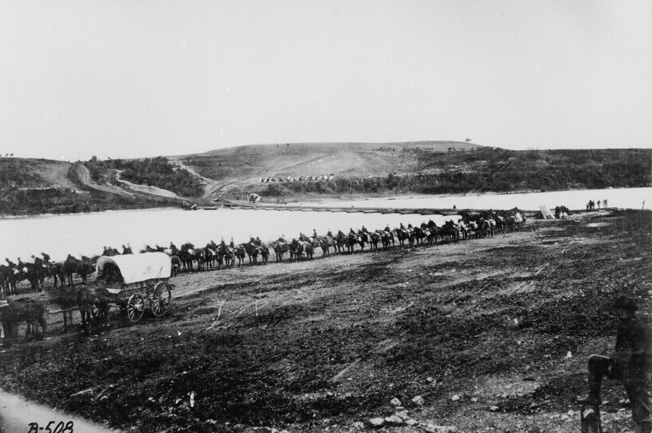
The 2nd Cavalry retained that designation until August 3, 1861, when all six mounted regiments were reassigned, resulting in the change of the unit’s name to the 5th U.S. Cavalry. Colonel Albert Sidney Johnston, the first regimental commander, relinquished his command when he resigned to accept a commission as a general in the new Confederate Army. He was replaced on May 3, 1861, by George H. Thomas, who, although he held a commission as a major general of Union volunteers during the war, retained the formal regular position of colonel of the regiment until October 1863.
Company H: A Unit of Immigrants
Many other regimental officers resigned from the unit to accept commissions in the Confederate Army. At the close of 1860, Company H was commanded by Captain Nathan “Shanks” Evans of South Carolina, who took a leave of absence for two months starting in January 1861 and was declared absent without leave on March 27. Evans later saved the Confederate Army at the Battle of First Manassas. He was replaced in January 1861 by 2nd Lt. James E. Harrison, who subsequently received two brevet promotions for gallantry during the war. Captain Kenner Garrard took command on April 30, 1861. In June, the Army sent him to the United States Military Academy at West Point as commandant of cadets. Garrard subsequently rose to the rank of major general of volunteers by the end of the war.
First Lieutenant William McLean assumed command of the company on August 31, 1861, upon Garrard’s transfer, and remained in command until he was captured by Confederate cavalry during a skirmish at Old Church, Virginia, on June 13, 1862. The Confederates were commanded in this action by Fitzhugh Lee, a former officer in the 2nd Cavalry.
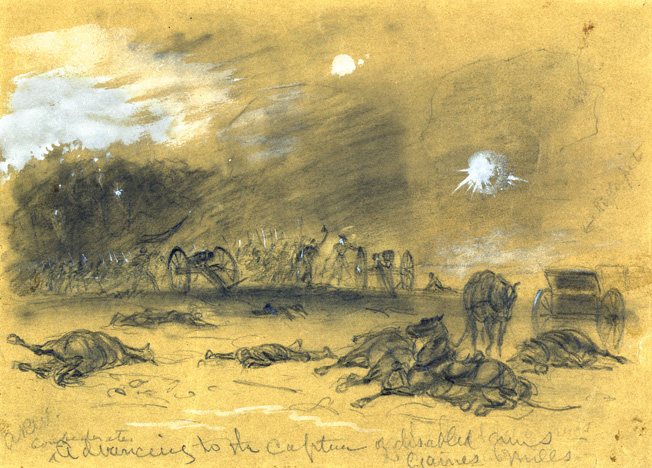
McLean was exchanged later that summer. Promoted to captain and appointed to command Company M in September, he remained absent without leave according to the regimental returns and muster rolls for the period. McLean was assigned to recruiting duty at Carlisle Barracks in Pennsylvania but died of unknown causes on April 13, 1863, at the Clarendon Hotel in Washington, D.C.
The vast majority of the company, including all eight noncommissioned officers, were veterans of hard frontier service in Texas, having served in the old army in the 2nd Cavalry prior to the Civil War. One of the most experienced soldiers was Private Thomas McDermott. Born in County Galway, Ireland, McDermott listed his civilian occupation as a clerk. Literate and physically imposing at six feet tall, he had enlisted in the 2nd U.S. Dragoons in November 1848, quickly moved up the ranks, and was discharged in 1853 as the company first sergeant. In 1859, he reenlisted and was assigned to Company H, 2nd Cavalry, while residing in Baltimore. McDermott was severely wounded at Gaines’ Mill and was hospitalized until early 1863. After recovering, McDermott was appointed an ordnance sergeant and served in that capacity until his death on June 7, 1886, at Key West, Florida.
Typical of a regular army company, the majority of the men in Company H were immigrants, predominately Irish. In all, 30 men came from the Emerald Isle. There were also five Germans, and one man each from Austria and France. Only 19 men reported their birthplace as the United States: six from New York, three from Massachusetts, two each from Maryland, Pennsylvania, Ohio, and Kentucky, and one each from Indiana and the District of Columbia. According to the U.S. Army Enlistment Register, the majority of the men, 21 in all, were unskilled laborers prior to enlisting. Other occupations reported included five boot and shoemakers, four farmers, three clerks and hostlers, two teamsters, and a variety of other trades.
Desertion posed a constant problem for the regular army throughout the 19th century. In peacetime, garrisoned in dreary frontier posts, drawing low pay and usually serving under dangerous conditions, soldiers deserted in large numbers. Wartime drove more men out of the ranks. A total of 320 men deserted from the regiment in 1861, and only 30 were apprehended. Company H had the third highest desertion rate with 42.
Organizing the 5th Cavalry For War
With the outbreak of the Civil War, Army authorities quickly realized that the regulars would be needed in the East to form a professionally trained reserve force and train the multitudes of state volunteer troops then being raised to suppress the rebellion. Meanwhile, the Western Department commander, Brevet Maj. Gen. David E. Twiggs, had surrendered most of the Union forces in Texas to Confederate authorities. The regiment successfully deployed out of the state, although, to the troopers’ sorrow, they had to leave behind all their horses.
Like many regiments of U.S. Army Regulars, the 5th Cavalry was commanded by captains and lieutenants for most of the war. Command of the regiment changed 34 times. Remounted at Carlisle Barracks, the regiment deployed two battalions of four companies each. While Companies D and H were stationed at Washington on provost duty, one battalion consisting of Companies B, E, G, and I saw action at Bull Run on July 21, 1861. During that campaign, the second battalion, consisting of Companies A, C, F, and K, served in the Shenandoah Valley under the command of Maj. Gen. Robert Patterson.
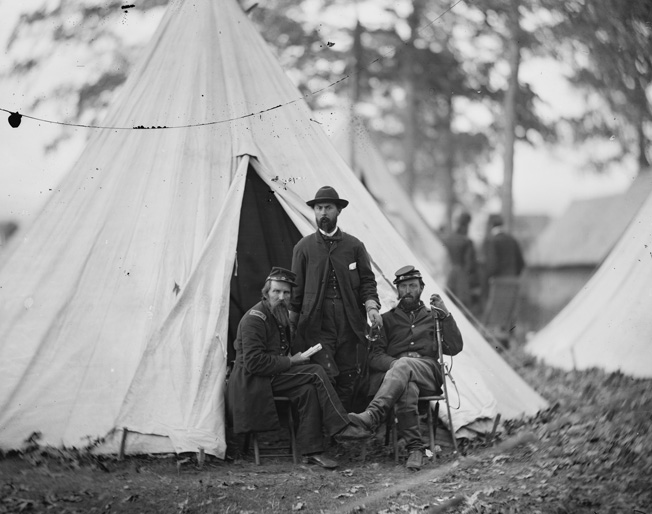
During peacetime, a regular cavalry company was authorized to include a captain, a first and second lieutenant, four sergeants, four corporals, two buglers, a farrier or blacksmith, and 50 privates, for a total of 61 enlisted men. At the beginning of the Civil War, the authorized strength was raised to 78 privates. Following the Bull Run campaign, the regiment remained on duty in the nation’s capital. Prior to moving to the Peninsula in March 1862, Maj. Gen. George B. McClellan, commanding the Army of the Potomac, formed three of the four regular cavalry regiments (the 1st, 5th, and 6th) into a Cavalry Reserve Brigade under the command of Brig. Gen. Phillip St. George Cooke, the father-in-law of former 1st Cavalry member and future Confederate legend J.E.B. Stuart.
The 5th Cavalry in the Seven Days Battle
After its disembarkation at Fortress Monroe at the end of the James Peninsula, the regiment slowly moved west toward Richmond. Company H had an aggregate strength on June 1, 1862, of 55 enlisted men. However, 10 soldiers were absent on detached service, sick, or on extra duty. That number was also decreased by the three soldiers missing in action at Old Church on June 13. First Sergeant Edward Preston dislocated a knee while helping to free a wagon from the mud just two days prior to the Battle of Gaines’ Mill. He was evacuated to Washington, dropping the available manpower for the coming battle to just 41. With McLean missing and Preston hospitalized, the company was commanded by the remaining seven NCOs during the ensuing Battle of Gaines’ Mill.
On the morning of the second day of the Seven Days battles, June 27, 1862, the Union V Corps, under the command of Maj. Gen. Fitz-John Porter, was positioned in a wide semicircle on the north bank of the Chickahominy River below Gaines’ Mill. Porter positioned the Cavalry Reserve, now increased in size to two brigades, to the rear of the left of the infantry line deployed along Boatswain’s Creek. What followed was the regiment’s most desperate fight of the entire war. Commanded by Captain Charles J. Whiting, West Point Class of 1853, only five companies (A, D, F, H, and I) of the 5th Cavalry, numbering seven officers and 220 enlisted men, were present for duty.
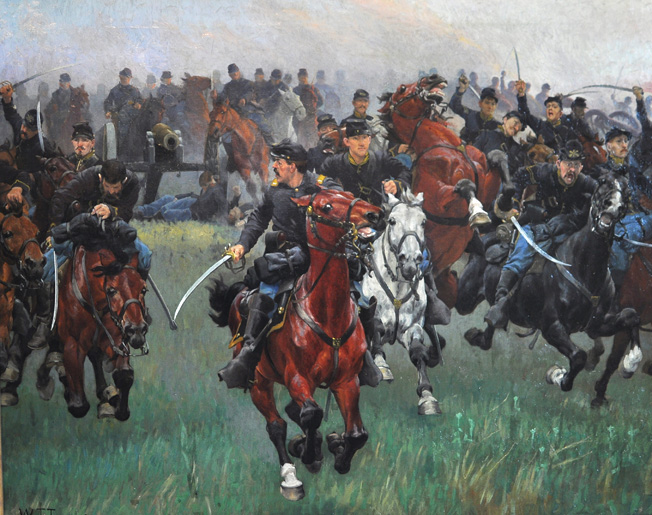
Around midday, the Confederates, in overwhelming numbers, launched their first attack, and the fighting went on until dark. Cooke had deployed the 5th Cavalry in two lines supported by the 1st Cavalry Regiment, positioned a little to the rear and filling the interval of two artillery batteries in the reserve line. The troops came under hot fire from Confederate muskets and artillery throughout the afternoon. Cooke instructed Whiting to charge “when the support or safety of the batteries required it.”
The Confederate Texas Brigade, under the command of Brig. Gen. John Bell Hood, a former officer in the old 2nd Cavalry, made the critical breakthrough on the left of the Union line toward dusk. The supporting Confederates quickly overwhelmed the Union infantry and forced their disorderly retreat. The obvious target was the first line of Federal artillery, which was attempting to limber up and make an escape. All told, the batteries making up the first line of artillery defense on the plateau lost 10 guns to the Confederate assault.
“A Hard Duty Given This Half of the Fifth Cavalry.”
Receiving further orders from Cooke, Whiting prepared his regiment to charge to save the reserve line of artillery. The official cavalry tactics manual, authored by Cooke in 1861, prescribed a charge as beginning with a walk of 20 paces, 60 paces at the trot, 80 paces at the gallop, and then an all-out charge. A pace was defined as three feet. With drawn sabers, the 5th Cavalry moved forward with a wild cheer. Soon enveloped by dust and smoke, the five companies, forming a small battalion, veered to the left and right to avoid the guns. They charged 275 yards across the open plateau, where the Confederates met them with heavy gunfire. Musket fire emptied many Union saddles, and the charge degenerated into a stampede in reverse when the troopers reached the edge of the woods bordering Boatswain’s Creek. Many horses went out of control, and their backward rush carried them into the reserve artillery line.
Whiting, his horse killed under him, fell stunned at the feet of the 4th Texas Infantry. Captain William Chambliss was grievously wounded in six places. Both were captured and interned at Libby Prison in Richmond. Lieutenant John Sweet was mortally wounded and died in Confederate custody. The battalion adjutant, 2nd Lt. Thomas Maley, although wounded, assisted in reforming the battalion after the charge. Both Lieutenants Louis Watkins and Abraham Arnold were also wounded. Watkins was severely injured when he was trampled by a number of troop horses. Only Captain Joseph McArthur survived unhurt to command the remnants of the battalion. In all, the total casualties were four killed, 30 wounded, and 21 missing in action and presumed captured. Unsupported and without most of its officers, the regiment rallied, reformed, and was soon assisted in covering the retreat of the Federal army across the Chickahominy River.
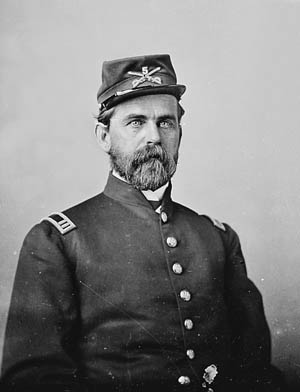
Meanwhile, most of the guns in the reserve line had been overrun. Nine of the pieces were captured by the enemy, raising the total of Federal guns captured to 19. While the charge had failed to stop the Confederate advance, it did give the artillery enough time to save most of its guns. Cooke succinctly summed up the incident, describing it as “a hard duty given this half of the Fifth Cavalry.” The Comte de Paris, a French nobleman serving as a volunteer on Union General George B. McClellan’s staff, wrote to Cooke in 1877, “The main fact is, that with your cavalry, you did all that cavalry could do to stop the rout.”
Although the regimental historian later noted that the “regiment performed its most distinguished service” in the charge, Porter and Cooke carried on an extended dispute over the 5th’s effectiveness in the battle. In charging that the cavalry action was unsuccessful, Porter sought an excuse for the events of the day that resulted in the defeat of his V Corps. For his part, Cooke solicited the testimony of many cavalry colleagues to argue that the charge had actually saved the entire V Corps from destruction. Historians have generally sided with Cooke.
Only the junior sergeant, Albert S. Wing, and two corporals, Thomas Tuffy and John J. Donnelly, escaped injury during the charge and led the company off the field when the regiment withdrew. Wing survived the war and continued to serve in the army until 1894 as a messenger with the adjutant general’s office in Washington. Tuffy became the company first sergeant and reenlisted in July 1864, but deserted less than two months later. Donnelly survived the war and served with the 5th Cavalry until his appointment as an ordnance sergeant in 1883. He died in 1886 while stationed at Fort Grant in the Arizona Territory.
Company H Casualties in the Battle of Gaines’ Mill
After the Battle of Gaines’ Mill, the official muster rolls listed Company H with an available strength of just 32 enlisted men. That number reflected one man missing in action since a late May skirmish at Hanover Court House. He was identified as one Private John Byrnes, who was later exchanged and discharged for disability at New York City on December 18, 1862. It also included the three missing since June 13 and six missing in action at Gaines’ Mill on the 27th. Of the six, only one, Private Jacob Dale, returned to duty. Dale, who was wounded in the fight and captured, was exchanged in August 1862. In all likelihood, the others died on the battlefield and were buried in unmarked graves. Ten men were reported wounded in action at Gaines’ Mill. The company also lost a total of 18 horses in the action.
Second Sergeant Shaffholt J. Antoni was the ranking noncommisioned officer in the company at Gaines’ Mill. Antoni, whose real name was Joseph Antoni Shaffholdt, hailed from the Alsace region of France. He enlisted in 1855, reenlisted in June 1860, and had been a sergeant since that November. Reported as missing in action at Gaines’ Mill, he was almost certainly mortally wounded. His wife, Diana, claimed in her application for a widow’s pension that an officer in the 5th Cavalry had sent her a letter telling her that her husband had been wounded and died on the field. Investigation of prisoner of war records by the adjutant general’s office noted that one “S. Antonia, Co H 5th USA” had been admitted with a chest wound to a Confederate field hospital at nearby Savage Station, Virginia, but no other information could be found.
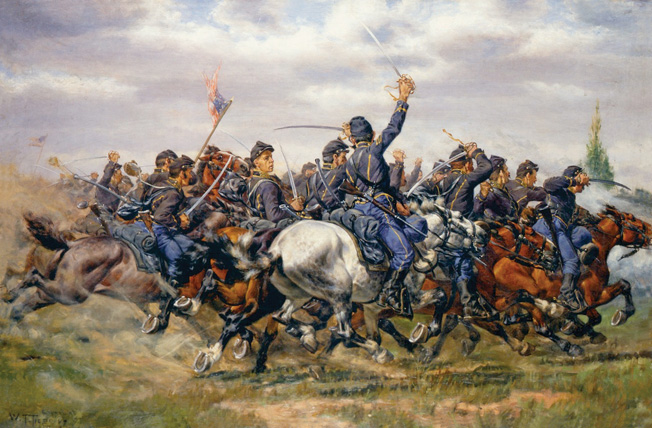
The third regimental sergeant, Thomas Barrett, was among the most experienced men in the company. A native of County Mayo, Ireland, Barrett enlisted in the 3rd U.S. Infantry at the age of 18 in June 1849. Discharged in New Mexico Territory in 1854, Barrett ended up in San Antonio, Texas, where he enlisted in Company H, 2nd Cavalry, in August 1856. Having reenlisted in June 1861, Barrett was severely wounded at Gaines’ Mill and died of his wounds on September 29, 1862, in a Philadelphia hospital.
The senior corporal was William Kenney, from Leitrim, Ireland. Kenney enlisted in June 1855 and reenlisted in April 1860. Reported as missing in action at Gaines’ Mill, Kenney never returned to duty and was probably killed in action and buried on the field by the Confederates. The junior corporal, George Anthony Hess, had been a landsman in the U.S. Navy before enlisting in Company H in September 1860. Serving as a sergeant during the charge on June 27, Hess was shot in the left arm near the shoulder. He was hospitalized in Washington until late September 1862 when he returned to duty. Rising to first sergeant, Hess was discharged on February 12, 1865, at Camp Russell, Virginia.
Of the 10 men wounded in action at Gaines’ Mill, Privates John T. Coffey, James D. Cavins, Thomas Crawley, Bernhardt Miller, Michael Hallahan, and Jacob Dale recovered quickly and were returned to duty before the end of August 1862. Private William Gregory returned to duty in September 1862, and was promoted to corporal at the end of that month. Gregory was later reported as missing in action on March 17, 1863, after the large-scale cavalry action at Kelly’s Ford, Virginia, and was probably killed. Hess returned to duty in September 1862, and Private John W. Fitzpatrick that October.
125 Battles and Skirmishes Fought by the 5th Cavalry
The 5th Cavalry had a long and distinguished service record during the Civil War. It was initially engaged at First Bull Run, where it covered the Union retreat and helped stop the last advance of the Army of Northern Virginia at Appomattox, Virginia, on April 9, 1865. In between, the unit fought in 125 battles or minor skirmishes. Company H was a notably cohesive unit as evidenced by the many veterans serving in the ranks and the absence of deserters while under active service. The unit history was largely a story of immigrants seeking to make their own way in a new country or native-born Americans who may have been down on their luck and decided to give the army a try. Most remarkable of all was their unit discipline and cohesion despite the fact that no officers or first sergeants were available to command them at Gaines’ Mill.
The charge at Gaines’ Mill continues to play a major role in the history and heraldry of the 5th Cavalry. The central shield of the regimental coat of arms and the distinctive unit insignia bear a Cross Moline, which symbolizes the charge at Gaines’ Mill. The Cross Moline represents the iron pieces of a mill stone (moulin, the French word for mill). Certainly, the officers and men of the 5th Cavalry who took part in the battle on June 27, 1862, more than lived up to the regiment’s motto: Loyalty and Courage.
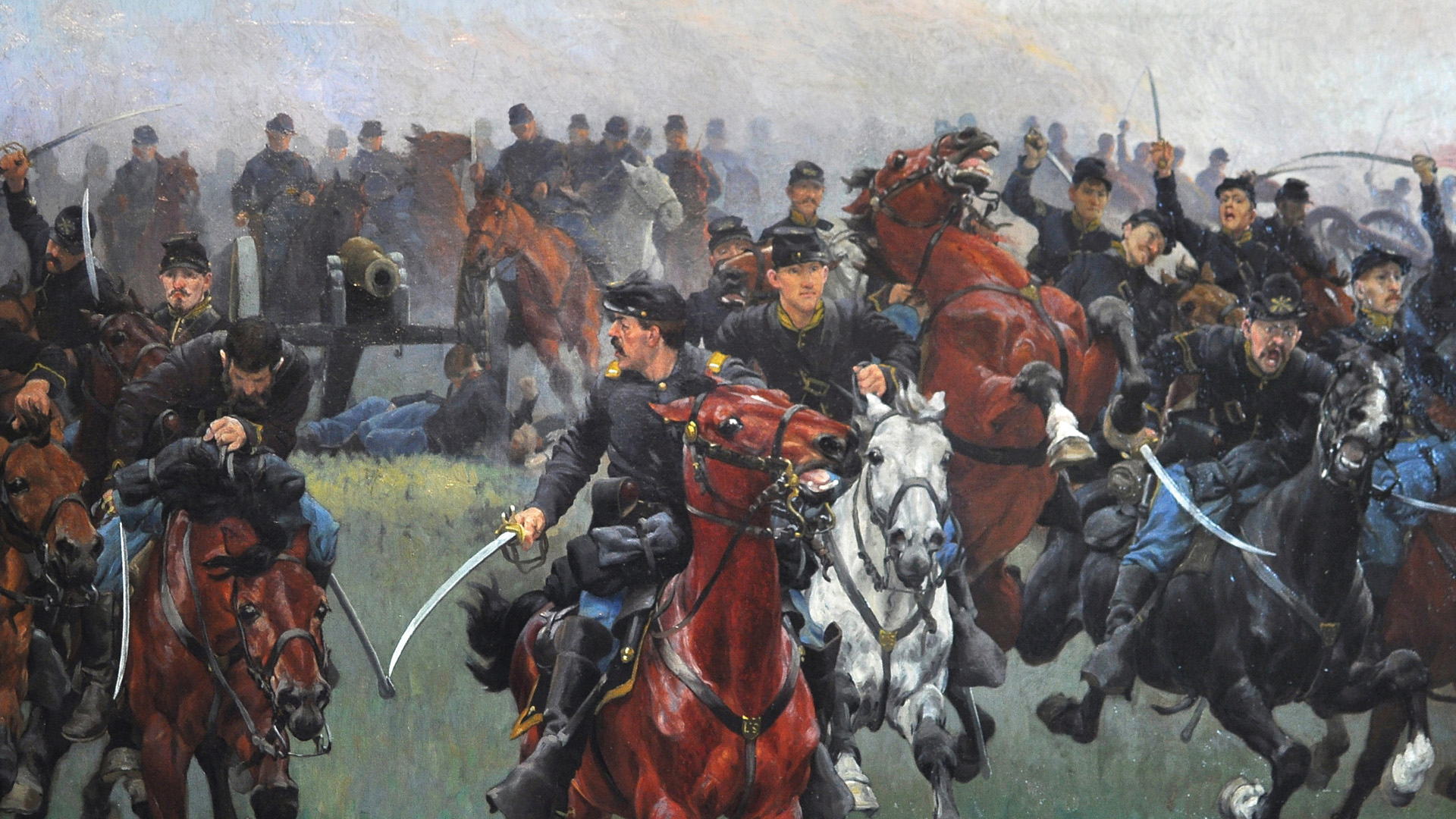
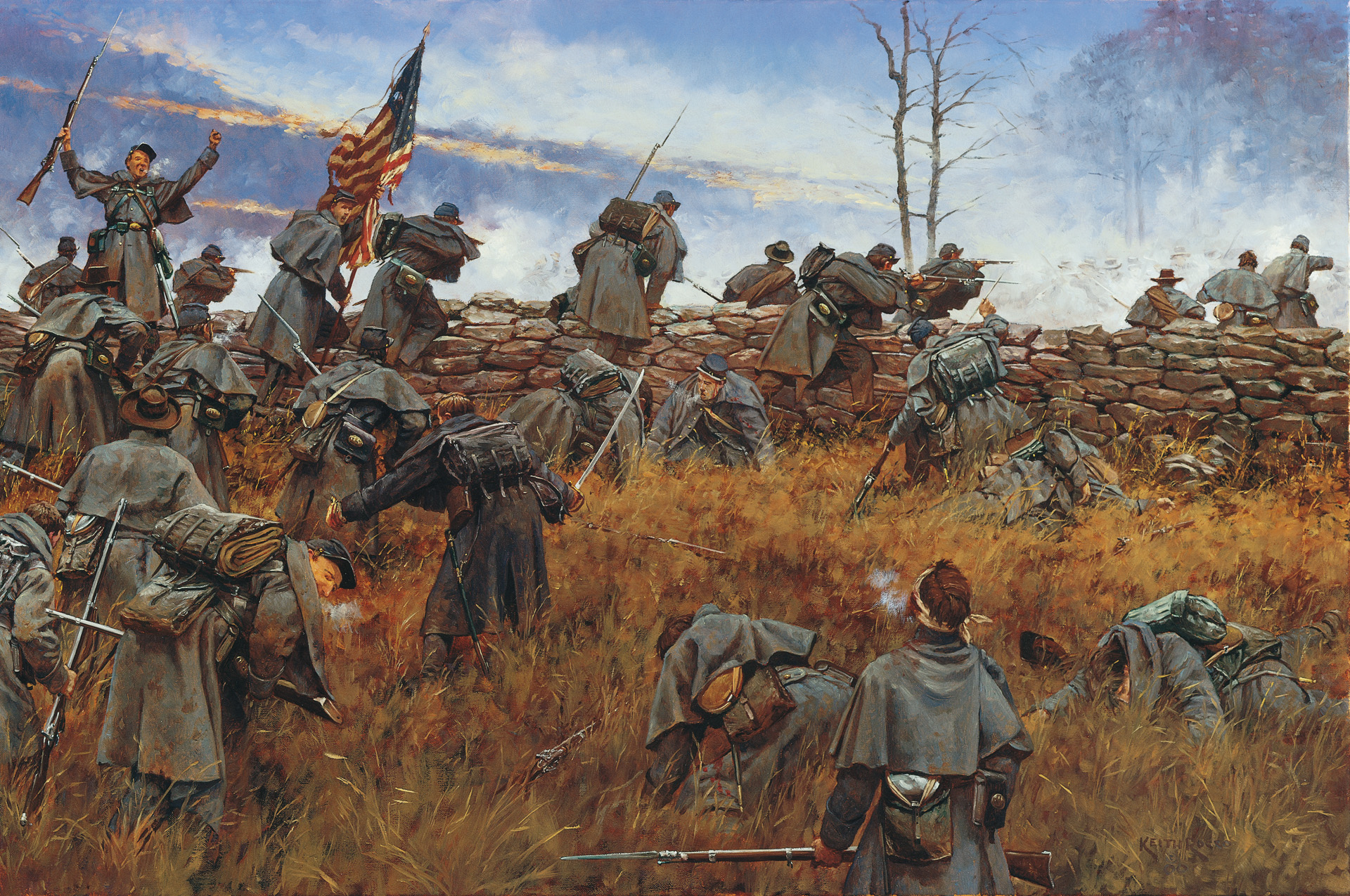
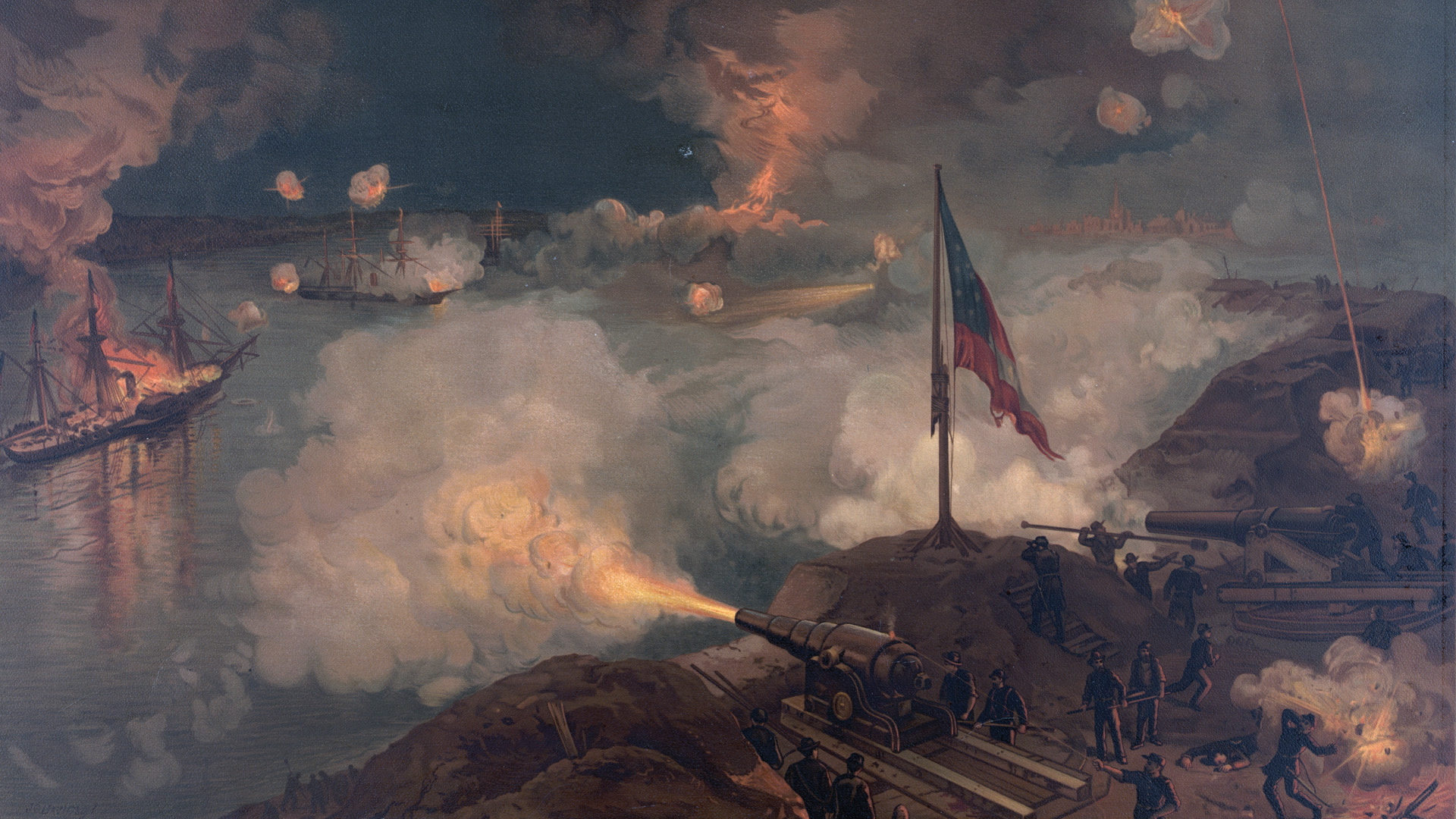

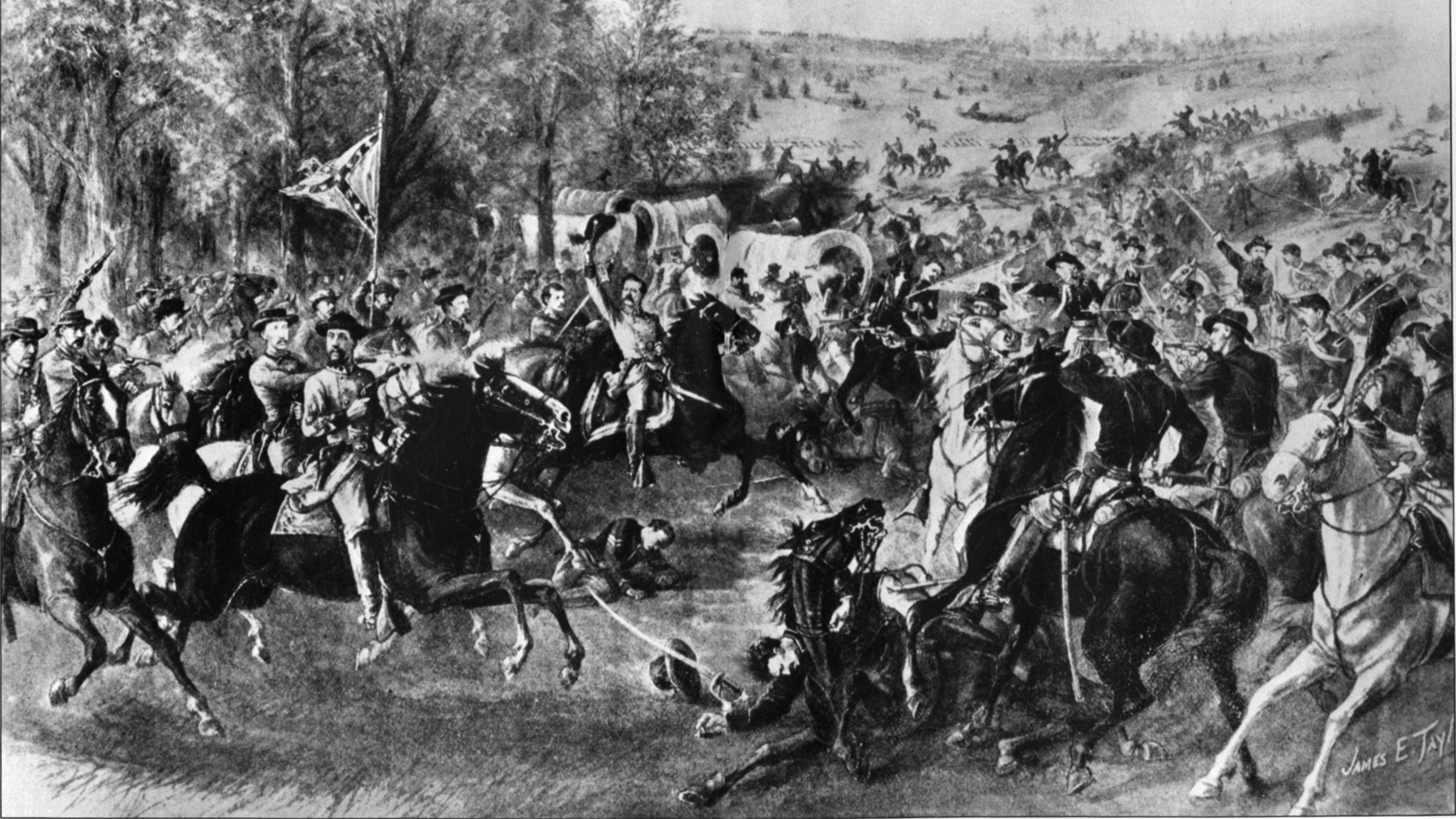
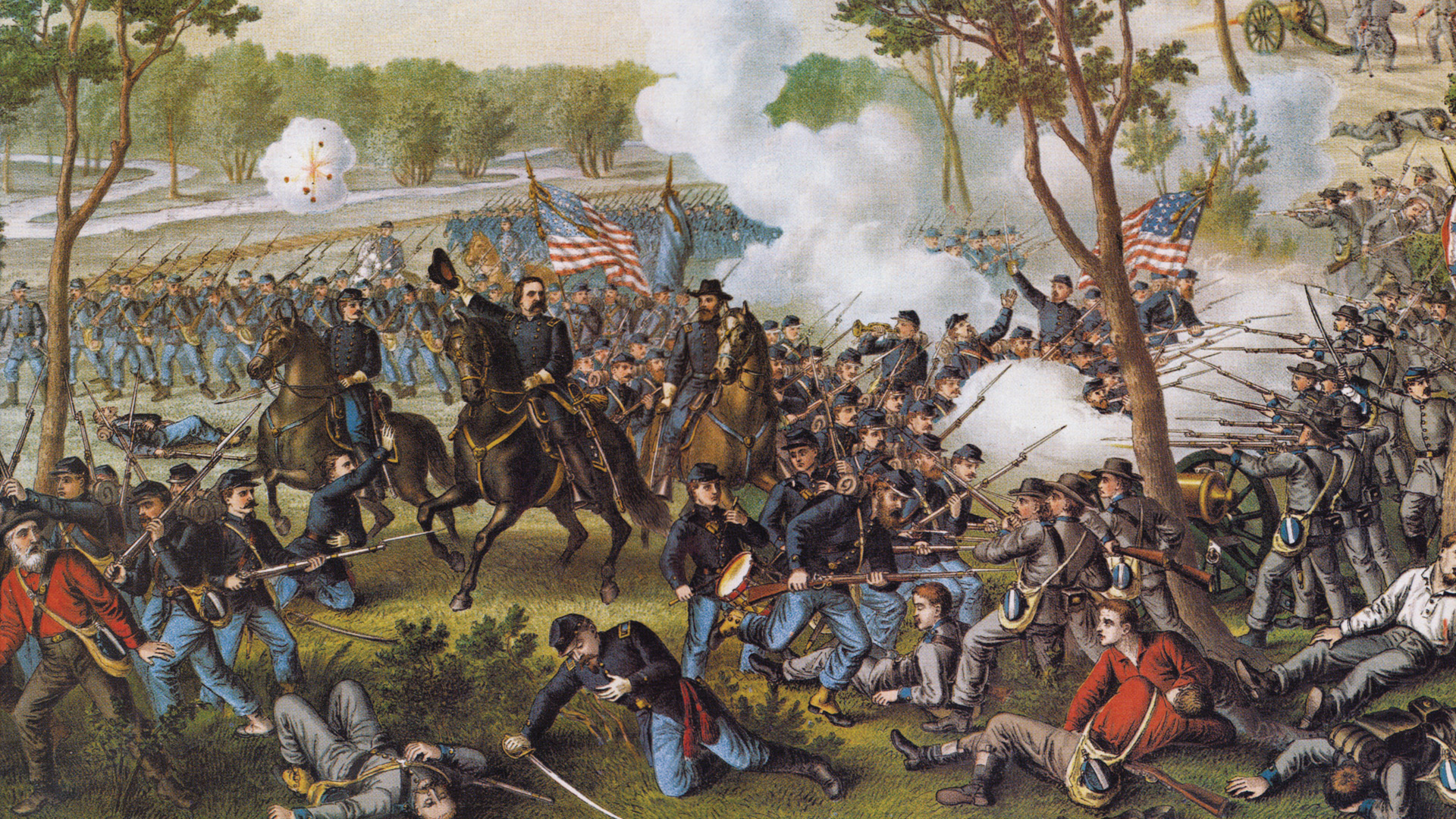
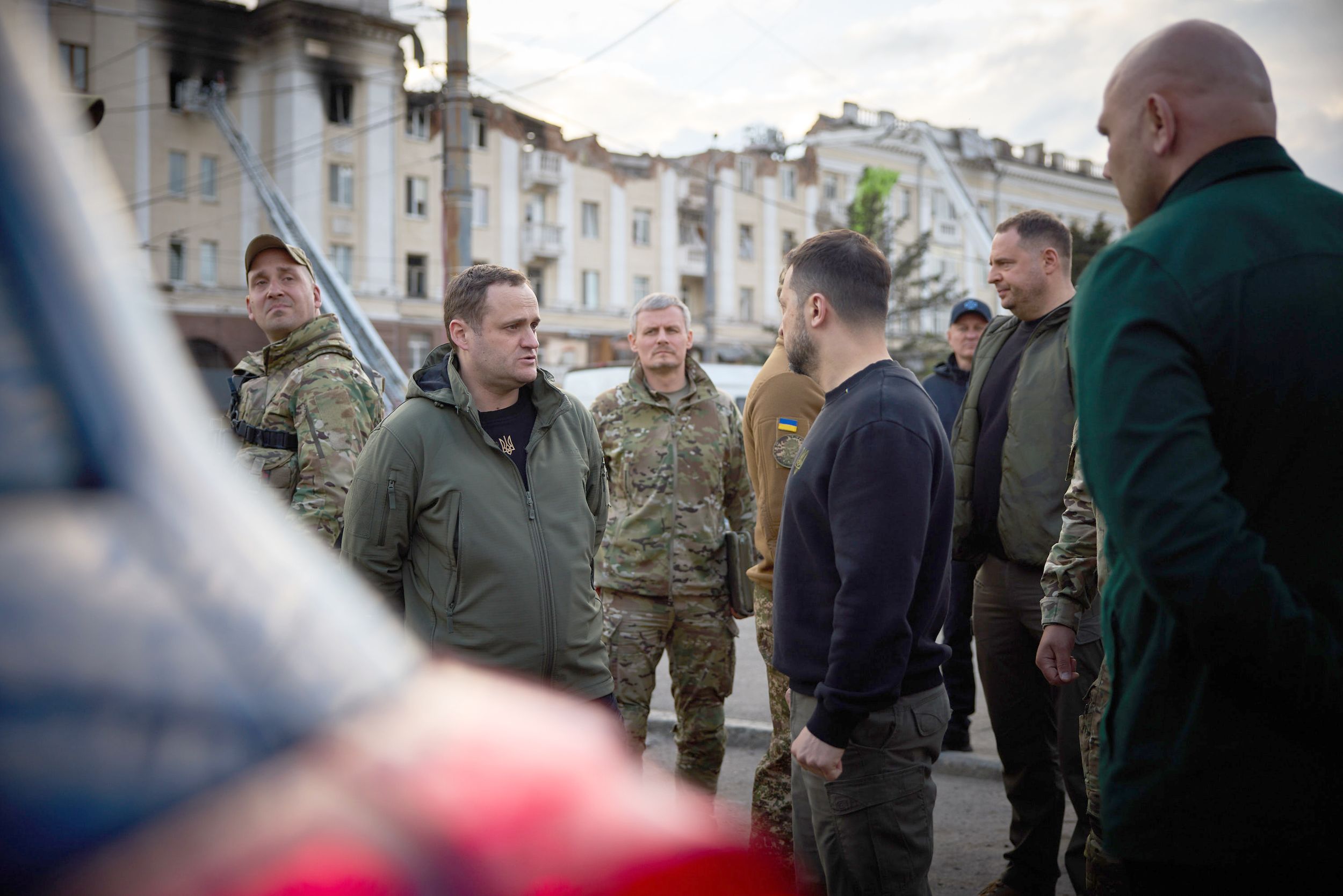
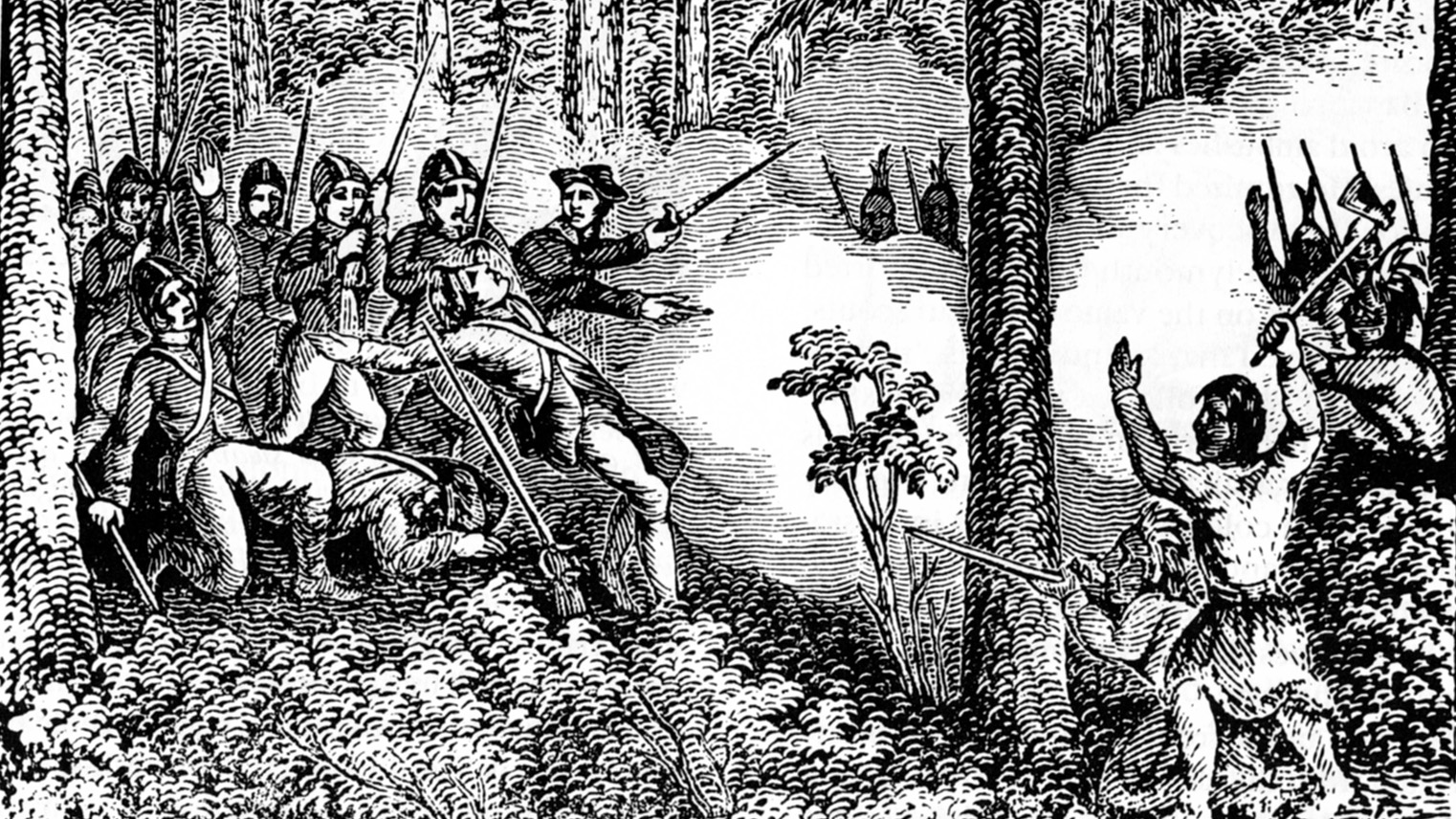
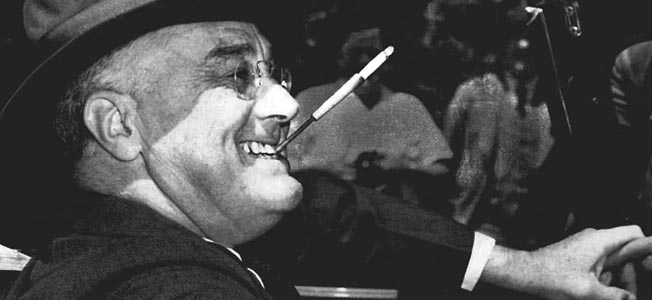
Hello,
What magazine and issue is this article in?
I would like to buy a copy.
Thanks
Whiting graduated West Point in 1835